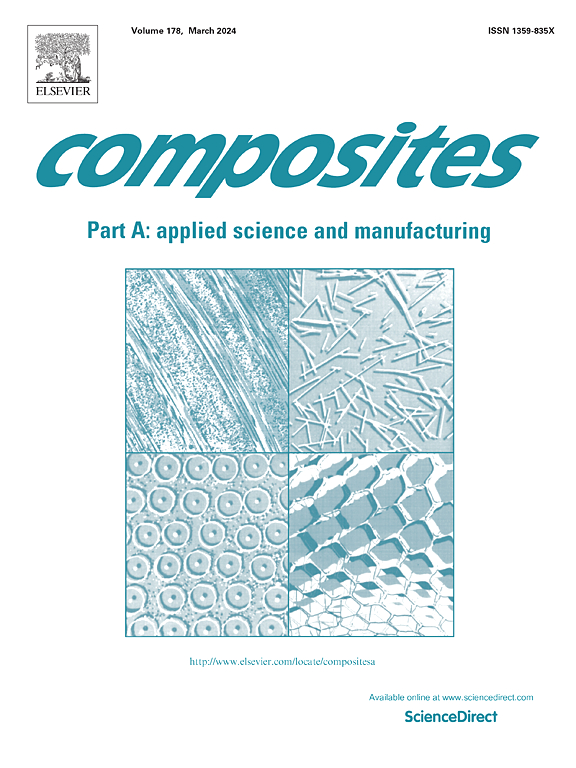Obtaining the longitudinal compressive response of unidirectional laminate composites from fiber misalignment micrographs through machine learning
IF 8.1
2区 材料科学
Q1 ENGINEERING, MANUFACTURING
Composites Part A: Applied Science and Manufacturing
Pub Date : 2024-11-09
DOI:10.1016/j.compositesa.2024.108574
引用次数: 0
Abstract
The longitudinal compressive behavior of unidirectional composite laminates with fiber waviness is highly complex and plays a crucial role in determining final failure of composites. Evaluating this behavior, especially considering nonlinear failure mechanisms like kink-band formation, typically requires computationally expensive finite element analysis, which is impractical for large-scale quality inspection. To address computational challenges, this paper develops a new computational framework using Convolutional Neural Network (CNN) models, providing an ultra-efficient prediction of the entire stress–strain curve of composites with fiber waviness. The CNN models were trained on simulation data generated from an experimentally validated mesoscale finite element model. The microstructures of the composites with fiber waviness were taken from realistic micrographs, resulting in diverse stress–strain curves. The proposed CNN models showed high accuracy and efficiency for predicting the highly nonlinear stress–strain curves of the composites, which can be employed as a real-time evaluation method of the criticality of fiber waviness.
通过机器学习从纤维错位显微照片获取单向层压复合材料的纵向压缩响应
带有纤维波纹的单向复合材料层压板的纵向压缩行为非常复杂,在决定复合材料最终失效方面起着至关重要的作用。评估这种行为,特别是考虑到扭结带形成等非线性失效机制,通常需要进行计算成本高昂的有限元分析,这对于大规模质量检测来说是不切实际的。为解决计算难题,本文利用卷积神经网络(CNN)模型开发了一种新的计算框架,可超高效率地预测带有纤维波纹的复合材料的整个应力-应变曲线。CNN 模型是在经过实验验证的中尺度有限元模型生成的模拟数据上进行训练的。带有纤维波纹的复合材料的微观结构取自真实的显微照片,从而产生了不同的应力-应变曲线。所提出的 CNN 模型在预测复合材料的高度非线性应力-应变曲线方面表现出很高的准确性和效率,可用作纤维波纹临界度的实时评估方法。
本文章由计算机程序翻译,如有差异,请以英文原文为准。
求助全文
约1分钟内获得全文
求助全文
来源期刊

Composites Part A: Applied Science and Manufacturing
工程技术-材料科学:复合
CiteScore
15.20
自引率
5.70%
发文量
492
审稿时长
30 days
期刊介绍:
Composites Part A: Applied Science and Manufacturing is a comprehensive journal that publishes original research papers, review articles, case studies, short communications, and letters covering various aspects of composite materials science and technology. This includes fibrous and particulate reinforcements in polymeric, metallic, and ceramic matrices, as well as 'natural' composites like wood and biological materials. The journal addresses topics such as properties, design, and manufacture of reinforcing fibers and particles, novel architectures and concepts, multifunctional composites, advancements in fabrication and processing, manufacturing science, process modeling, experimental mechanics, microstructural characterization, interfaces, prediction and measurement of mechanical, physical, and chemical behavior, and performance in service. Additionally, articles on economic and commercial aspects, design, and case studies are welcomed. All submissions undergo rigorous peer review to ensure they contribute significantly and innovatively, maintaining high standards for content and presentation. The editorial team aims to expedite the review process for prompt publication.
 求助内容:
求助内容: 应助结果提醒方式:
应助结果提醒方式:


